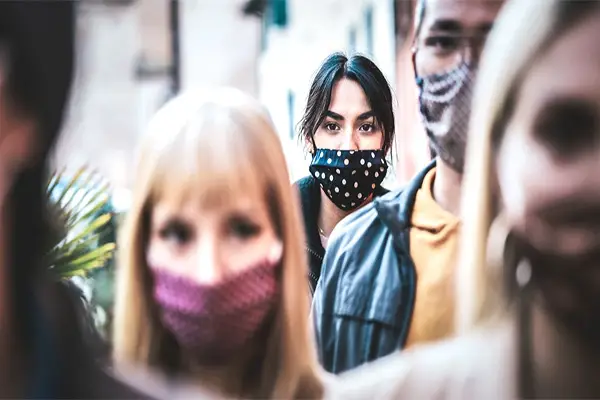IN THE LATEST OUTBREAK, THE FIRST CASE OF THE VIRUS WAS RECENTLY REPORTED IN THE UNITED STATES.
COVID-19 has generally dominated the public’s attention in terms of looming health problems over the past two years, and it’s not a leap to say it has largely dominated the public’s focus in terms of looming health worries.
While Yahoo Life hasn’t prevented the emergence of other potential health disasters. This includes the current epidemic of monkeypox in various nations, which has drawn the attention of health experts. But what exactly is this virus, and how dangerous is it?
Continue reading to learn more about monkeypox, including how to recognize it and the symptoms it produces.
A monkeypox outbreak has spread across five countries, resulting in scores of cases.

According to the Centers for Disease Control and Prevention, the virus that causes monkeypox was originally detected in 1958 when an outbreak occurred within a colony of laboratory monkeys, giving it its name (CDC). According to a 2005 study provided by researchers, as a near relative of the now-extinct smallpox virus, widespread vaccination helped to keep human instances down for decades. The scientists also theorized that declining population immunity resulted in a rise in human cases. According to the CDC, the sickness has now been recorded in other Central and West African countries.
The most current outbreak began on May 7 in the United Kingdom, when a case was detected in a person who had recently returned from a vacation to Nigeria. Since then, 68 cases have been documented in Portugal, Spain, and Canada, with more on the way. According to the BBC, a case was recently confirmed in the United States of a patient in Massachusetts after he returned from a trip to Canada.
According to experts, the virus generally does not transmit thus easily from person to person.

According to NPR, monkeypox is conveyed to people through a bite, scrape, or close contact with an infected animal. However, while monkeypox can be spread through direct contact with an infected person’s bodily fluids, particularly through contaminated clothing or bedding, the CDC states that “human-to-human transmission is thought to occur primarily through large respiratory droplets,” which “generally cannot travel more than a few feet, so prolonged face-to-face contact is required.”
Fortunately, unlike COVID-19, the virus is rarely transmitted from person to person, according to the UK Health Security Agency (UKHSA). The recent outbreak, however, was described as “rare and unusual” by Susan Hopkins, MD, the agency’s chief medical adviser, who added that the agency was “rapidly investigating the source of these infections because the evidence suggests that there may be a transmission of the monkeypox virus in the community, spread by close contact.”
The agency appears to be investigating whether or whether a previously undiscovered mode of transmission is viable. According to NPR, Mateo Prochazka, an epidemiologist at the UKHSA, tweeted, “What is even more weird is identifying cases that appear to have acquired the illness via sexual contact.” “This is a novel transmission method that will have a significant impact.”
Monkeypox usually causes a variety of symptoms in persons who are infected.

There are a few symptoms that someone has been infected with monkeypox, according to the CDC. The virus, according to the CDC, causes symptoms that are similar to smallpox but are milder, starting with a fever, headache, muscle pains, backaches, chills, and weariness. One major distinction is that monkeypox also causes lymph node edema, whereas smallpox does not. The incubation time between infection and the first indications of illness is usually seven to fourteen days, but it can be as long as five to twenty-one days, according to the CDC.
Infected patients will develop a rash with lesions that generally start on the face before spreading to other regions of the body one to three days after the onset of initial symptoms. The pustules will typically burst and scab over before dropping off. According to the CDC, most people will have symptoms for two to four weeks after contracting the virus.
Officials are still looking at the virus’s risk to the general public, but they are optimistic.

Despite the fact that the majority of people recover from monkeypox, the virus can still be fatal. According to The Washington Post, two major strains of the virus differ in patient outcomes: the more severe Congo Basin strain, which kills one out of every ten individuals it infects, and the more moderate West African variant, which kills one out of every 100 patients.
Fortunately, the UKHSA says that the seven cases documented in the United Kingdom so far appear to be caused by the virus’s milder strain. “The instance offers Yahoo Life,” Massachusetts health officials said, adding that “the individual is hospitalized and in good condition.”
While some specialists are concerned about the possibility of novel mechanisms of transmission, most are cautiously confident that the current increase in cases does not constitute a severe health risk. “From the knowledge we have at this moment, I believe the risk to the general public is very, very minimal,” Tom Inglesby, MD, director of the Johns Hopkins Center for Health Security, told The Washington Post.
